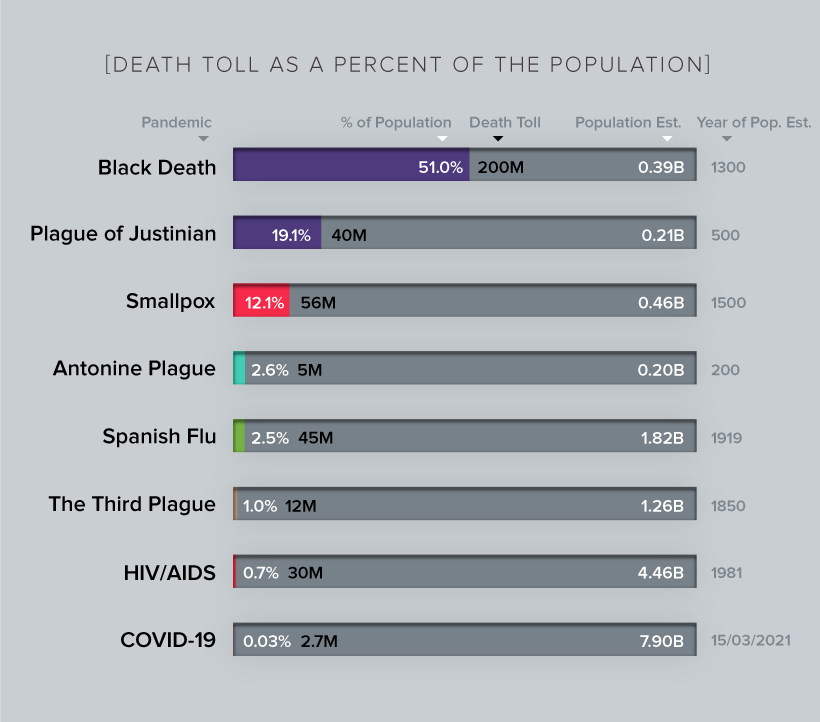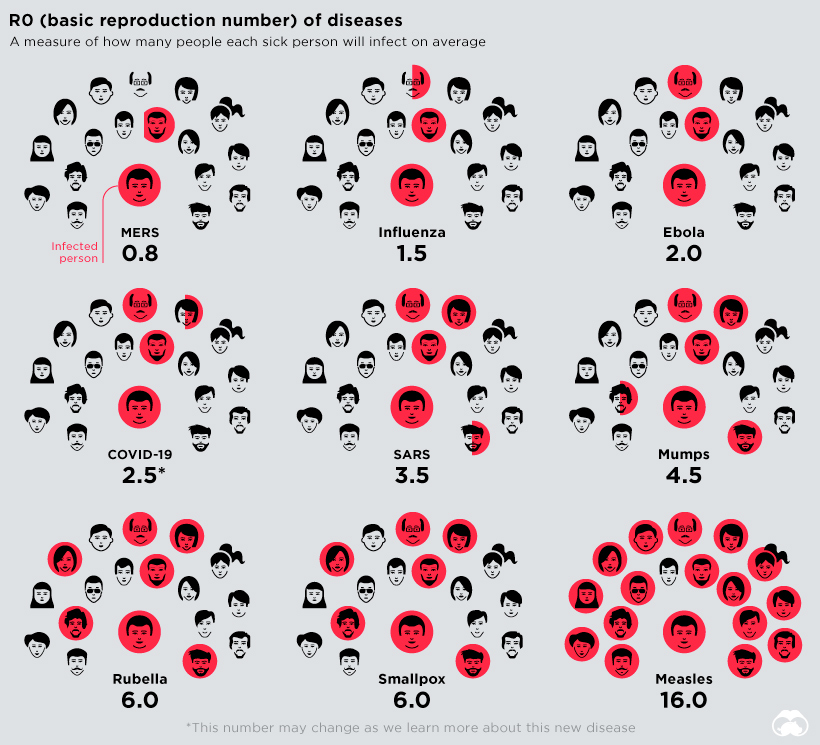After a year of the Covid pandemic, and despite massive improvement in medical standards in most countries, the reality is that this has not halted the huge impact of such events.
A Timeline of Historical Pandemics
Since virtually the dawn of civilisation, disease and illness have brought calamity, fear, and massive loss of life. A few milestones on humanity’s timeline:
- Widespread community adoption of agrarian farming increased the scale and spread of disease dramatically.
- Cross border trade created highways for human and animal interactions, fast-tracking epidemics such as malaria, tuberculosis, leprosy, influenza, smallpox, and others.
- Urban growth and more global trade with increased interaction between wider populations of both humans and animals and their respective ecosystems have made pandemics more likely.
The one shining beacon of hope is that, despite the persistence of disease and pandemics throughout history, healthcare improvements and a better understanding of the factors that incubate pandemics have been powerful tools in mitigating their impact.
Here is a list of history’s pandemics, and their impact on the global population:

Fortunately, we have moved on from the belief that plagues are the “wrath of God”. In the case of Justinian’s plague, which some historians have suggested led to the demise of the Roman Empire and ushered in the Dark Ages, the origins were traced to China and northeast India. More specifically, via land and sea trade routes to Egypt entering the Byzantine Empire through Mediterranean ports.
Combatting the Spread
The idea of ‘quarantine’ (from the Italian “quaranta giorni”, or 40 days) first began during the 14th century to protect coastal cities and ports. Vessels arriving in Venice from potentially infected ports were forced to wait for 40 days before landing.
More recently, in the mid-19th century, a form of Track and Trace was used to help combat cholera in London. Dr John Snow displayed local mortality data on a map, thus revealing a cluster of cases around a specific pump which people were drawing their water from. This led to his belief that the disease was spreading via contaminated water.
The R Number
The Reproduction Number tells us how many susceptible people, on average, each sick person will in turn infect. Here is a chart showing familiar diseases and their infection rates.

Measles with a R number range of 12-18 means a single person will infect, on average, 12 to 18 people; highlighting the importance of vaccination. Despite the impact of COVID-19 the speed and collaboration of the scientific community has brought hope and a possible end to the seemingly endless restrictions and isolation for many.
A Virtual Explosion.
Our global village has much to answer for in terms of pandemic spread. Global travel has seen air travel numbers nearly doubling in the last decade. This, plus the ease of international trade, creates the perfect environment and opportunity for disease to spread at speed across the globe.
We have, however, discovered that the shift to virtual communication has played its part in reducing the growth of infection. The huge reduction in commuting has given the world a breather, literally.
So, What’s Next?
Does anyone really know with any certainty? Looking short-term, there is undoubtably a huge pent-up demand for normality such as being able to take a holiday and escape the restriction and containment of the past twelve months. However, it is likely to be anything but straightforward. Andy Haldane, an economist at the Bank of England, expects there to be a massive boom in consumer spending as we emerge from lockdown. Let’s hope he’s right for the sake of many local businesses, large and small.
It is the short-term, just as in financial markets, where all the uncertainty lies. Emotional dislocation from normality is just as painful as the physical kind. It is the catalyst for unsound predictions and knee-jerk responses which often turn out to be wrong and often make the challenge of recovery more difficult. There is a danger in setting specific dates for change as we have so little control over circumstances. People often see these as written in stone, factoring them into their thinking and plans, and if they end up changing this can have a significant emotional impact.
The long-term seems safer. The outlook appears more positive. It’s a bit like family trips to the regular annual holiday destination. We know where the journey ends, but still must answer the “are we nearly there yet?” questions! In truth, we don’t know if we are nearly there but as we understand more about viruses and their transmission, the efficacy of vaccines, and then proceed to take sensible precautions, life will go on; even if a little differently than what we once took for granted.
We had hoped to be starting our third year in business with the anticipation of sitting down in the same room as our clients. In truth we have missed our regular in-person catch up meetings. There is no substitute for a smile, a handshake, and a good cup of tea or coffee with friends. It’s one of the things we value most, so rest assured whenever people feel comfortable getting together, we will be delighted to re-connect.
